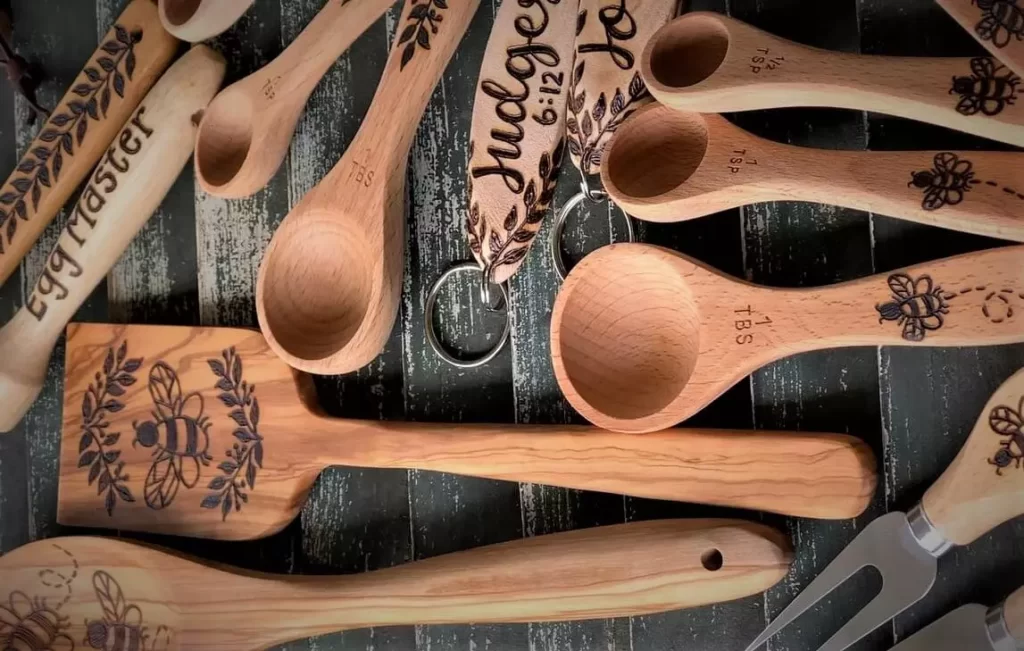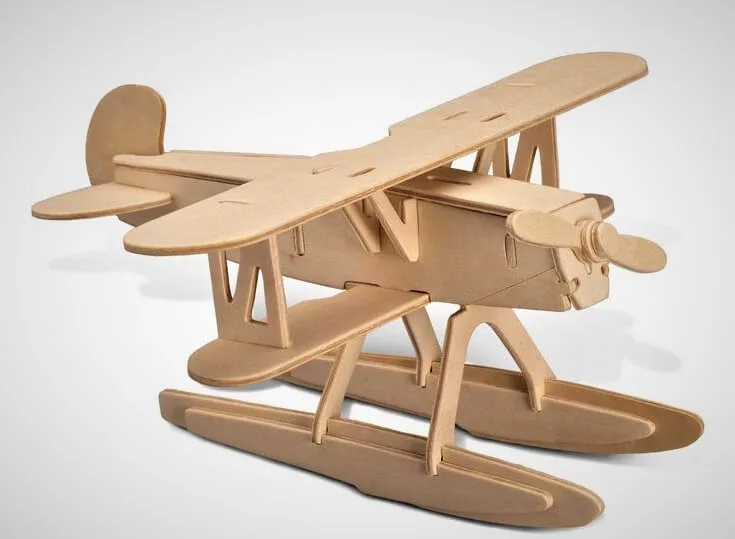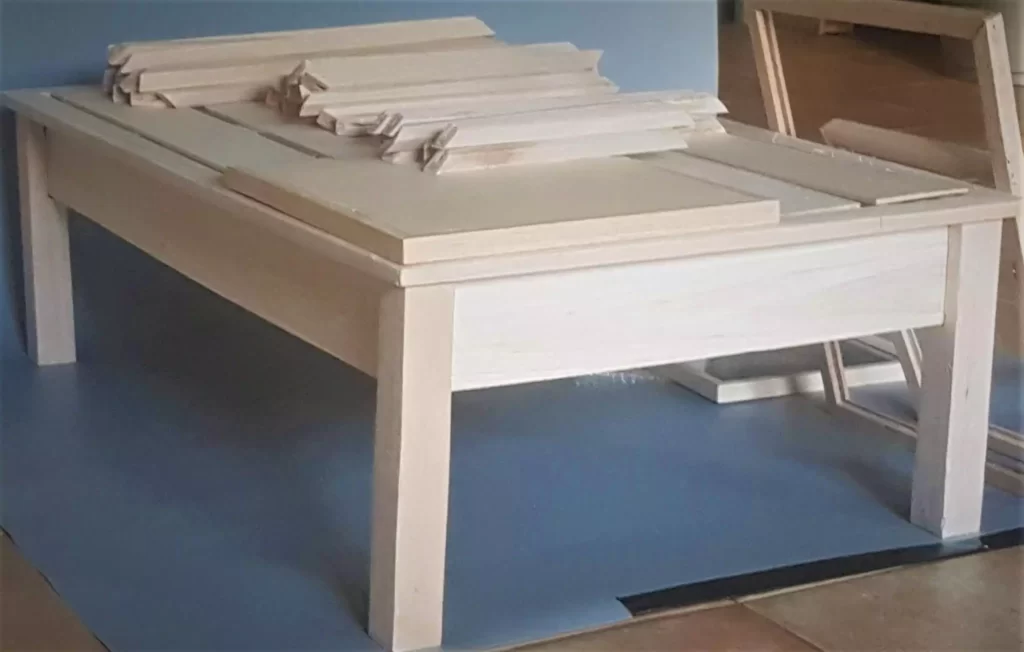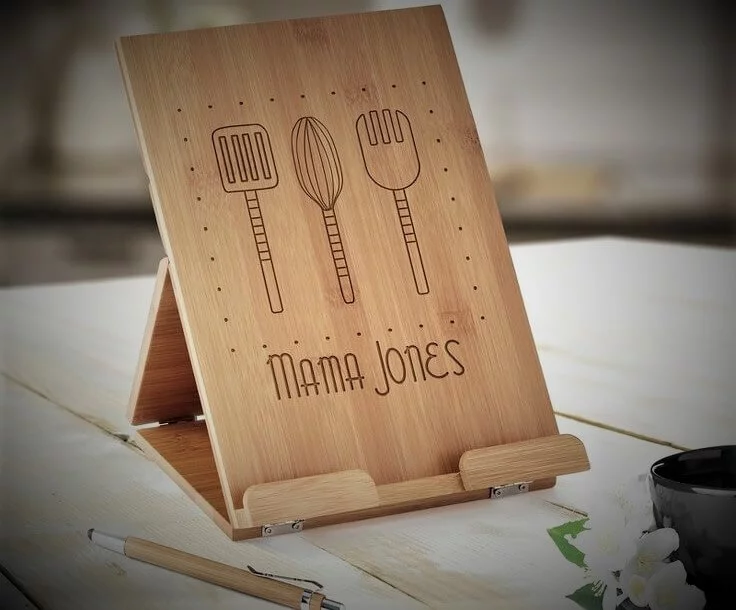Balsa wood for carving and many uses for other applications
The fields of application of balsa wood are very diverse; the wood is mainly used in model building, as a replacement for cork, for the construction of rafts, or in wind energy and the technology sector.
In this article, we will discuss what kinds of applications can be used for balsa wood. The tree depends on the tropical climate and has to be imported from other climates for sale and uses.

- Balsa wood for carving and many uses for other applications
- What is balsa wood used for?
- Balsa wood for model building
- Balsa wood for furniture
- Balsa wood for carving
- Balsa wood advantage and disadvantage
- Balsa Wood properties
- Where does balsa grow, and what kind of tree is it?
- What is the density of balsa wood?
- What is balsa wood particularly suitable for?
- What are the technical values of balsa wood?
- How stable is balsa wood?
- What are the special characteristics of balsa wood?
- What quality marks and quality standards are there for balsa wood?
- What is the price of balsa wood?
- How did balsa wood get its name?
- What coverings are available for balsa wood?
- Laser cutting & engraving of Balsa wood
- Conclusion
What is balsa wood used for?
Balsa wood uses widely applied for commercial purposes.
Some property manufacturing and building development companies take advantage of this material because it has the softest texture and is lightweight.
However, the adaptability of this material is extraordinary.
This is what makes any material created with this material will have significant quality and durability.
In the end, having a durable foundation, property, or furniture is no longer a mere dream.
This wood also has a very high buoyancy that makes it efficient in retaining heat and sound.

Balsa wood for model building
Balsa wood used as a means for building models has indeed been widely applied.
Several well-known engineers use this material to test bridge models, ship models, airplane models, flyover models, etc.
For a smaller scale, many also use it for making furniture.

Balsa wood for furniture
A famous furniture designer named Kihyun Kim has proven how Balsa wood uses can manufacture chairs, tables, and other materials.
Because it is soft and easy to sharpen, it is not surprising that this material is the choice for artisans to create something different.
In addition, its sturdiness and resistance to various climate changes are also very real. This is what increases the value and selling value of the furniture made from balsa wood.

Balsa wood for carving
The disadvantage is that sometimes something breaks off (in this case, one of the hind legs), and in some places, you just can’t cut it because the wood kind of ”frays”, no matter how sharp your knife is that happens.
Fortunately, this is no longer visible after touching up with sandpaper. The more details you want to create, the more you have to probe, and the more you have to deal with the direction of the wood grain.
With a chisel, you can get started in a very controlled and subtle way. You have to make sure that it is razor-sharp so that you don’t shoot out. And that you have a small, subtle chisel.
Balsa wood workability
Bow
Due to the stiffness of the wood, balsa is difficult to bend. To bend balsa, you need to soak or steam the wood (for example, over boiling water).
When balsa wood is wet, the fibers become more flexible, and you can bend the wood. After the wood has dried, it also retains its shape. In this way, it is relatively easy to get a bulge in the balsa.
Screwing or gluing
Balsa is a poor surface for screwing, and the screws do not stick, so balsa is glued more often. If you still want to screw, it is sometimes more convenient to do this by hand because you will soon be through it.
White glue, construction glue, epoxy, wood glue, mix, and thin glue differ about the best glue. In any case, both parts must be smooth so that they have a large contact surface.
Sawing, planing, cutting, milling, and sanding
Because balsa is so soft, cutting with a sharp knife is easy. A Stanley knife or small metal files often work fine. Milling with a Dremel is also possible.
Paint balsa
In principle, any type of paint is suitable to use. However, it is good to pre-treat the balsa to close the pores so that less paint is absorbed.
It would be best to sand the balsa smooth again between paint turns to achieve a smooth result for the best results.
Balsa wood advantage and disadvantage
It would be best if you also know realistically about Balsa wood uses.
As a result, you can determine whether to use this material or not from the information obtained. In particular, if you plan to use it on a larger scale.
Of course, this will take significant time, effort, and cost. You need factual information for consideration of your plan.
Balsa wood advantages
- First, Balsa wood uses will provide soft, lightweight, and high buoyancy, making it suitable for shipbuilding purposes and other large-scale constructions.
- Second, this material is also versatile, which will allow it to be carved into any shape. If you are an artist who animates unique and quality furniture, then this is the ideal material to try.
- Third, Balsa wood uses also has extreme strength. It is not surprising that many well-known engineers use it to support large buildings, residential properties, bridges, etc.
Balsa wood disadvantages
- It would be best if you were careful in the processing stage of Balsa wood uses. Why? This material is very flammable! If there is a human error or system error in your company, this material is the first device to catch fire and suffer severe damage. If this happens, then the costs and time that you have mobilized will also be wasted.
- For the choice of low-grade balsa wood, it will usually not have good water resistance. So, if you impose its use outside the room, this wood will be damaged quickly and eventually cannot be used anymore.
- Balsa wood also has several not ideal properties; These include high susceptibility to fungal and insect attacks.
- Balsa wood is also not weather resistant and only achieves the lowest durability class, corresponding to class 5.
- Soft balsa wood cannot be planed or filed, and nails or screws hold badly either. Therefore, it is advisable to glue or glue balsa wood.
Balsa Wood properties
Balsa wood is very versatile, which is why we want to give you all the important information about balsa wood in our guide.
We hope we can help you get a better overview of this wood species and answer your open questions about it.
The balsa tree is usually a medium-sized tree with deciduous leaves and a large crown of leaves.
What does balsa wood look like?
As for the appearance of balsa wood, you can say something about the grain and color.
Concerning the veins, it can be seen that the growth rings in balsa wood are not very pronounced in contrast to other trees.
These are only visible in trees of less than optimal places. However, the medullary rays and vascular grooves are visible. The medullary rays are usually broad.
Balsa wood color
If you look at the color of the balsa wood, it can vary and is usually pale yellow and sometimes even white.
A light pink color sometimes also occurs. You can recognize an older balsa tree by its heartwood.
If it is reddish and light brown, the tree is usually older. The sapwood, i.e., the outermost wood, is white. This is also an exception in trees, as the heartwood and sapwood are usually the same color.
Balsa wood leaves
The balsa tree itself is a medium-sized tree with deciduous leaves and a large crown of leaves. The trunk is straight and usually short, and the bark is smooth and marbled gray or white.
The leaves are heart-shaped and up to 40 centimeters in size, and also long, petiolate, and finely hairy.
The tree also has solitary yellow flowers in the shape of a funnel and a long, narrow, and hairy capsule fruit with seeds for wind pollination.
Where does balsa grow, and what kind of tree is it?
Other technical names of the balsa tree are Ochroma pyramidale belongs to the mallow family.
Balsa wood comes from the balsa tree, which is native to the Neutropes, i.e., Central and South America, the West Indies, the southern part of Mexico, and the southern tip of Florida, and is now found in many parts of the tropics, including Asia, Is cultivated.
Therefore, it is a tropical type of wood that has to be imported to be sold and used here in non-tropical regions.
Where is balsa wood from?
The balsa wood most commonly used in this country is imported from plantations in the Ecuadorian Andes.
There, rows of balsa trees are planted at an altitude of 400 to 1000 meters and later processed into balsa wood.
The tree is very fast-growing and can reach a height of 30 meters, sometimes even 50m, and a trunk diameter of about 100 cm to even 180 cm.
On the plantations, most trees are felled after five to seven years, having a trunk diameter of 30 to 50 centimeters. The wood is exported as logs or sawn into long planks on-site and shipped that way.
Depending on the desired application, such as round handles for use as broom or tool handles or angular planks for lumber, planks, or moldings, the wood is processed as follows.
First, the felled tree trunks are sawn into square scantlings and dried. Then it is usually machined and sanded to the desired different shapes.
The debarked logs are sawn to size to make plywood, and the thin sheets of wood are glued or glued and pressed at a high temperature.
What is the density of balsa wood?
Balsa wood has a very low density, which varies from 40 to 340 kilograms per cubic meter. The range in values is so wide because the densities vary according to how the wood is cut.
However, the most common densities are between 100 and 200 kilograms per cubic meter, i.e. 0.1 and 0.2 grams per cubic centimeter.
For easy comparison and a better overview, one can use the density of spruce, which has a value three times higher.
The different densities of balsa wood are also suitable for insulating material.
The thermal conductivity value is very low, with a density of 150 kilograms per cubic meter, indicating that the thermal insulation is very good.
As a result, balsa wood is also used as an insulating material.
Higher density balsa wood, on the other hand, has higher strength and hardness.
The so-called “quarter grain” refers to the wood from the center of the trunk. Quarter Grain is considered the most popular cut with the best features.
How heavy/light is balsa?
In the following table, we want to give you an overview of the relationship between the difference in density and the heaviness or lightness of balsa:
| Lightness | Density |
| ultralight | under 70 kilograms per cubic meter |
| soft | 70 to 125 kilograms per cubic meter |
| medium-hard | 125 to 175 kilograms per cubic meter |
| hard | 175 to 250 kilograms per cubic meter |
| extra-hard | above 250 kilograms per cubic meter |
In general, balsa wood is considered a very light wood and is also the lightest wood known.
There is a strong correlation between the density and the heaviness or lightness of the wood.
What is balsa wood particularly suitable for?
- Balsa wood is used in many different areas. One of the reasons for this is the spread of densities in different cuts.
- The traditional use of wood dates back to the construction of rafts, boats, and Hawaiian surfboards.
- Balsa wood is most often used for model building because balsa wood is light and very easy, and easy to work with. Here it is mainly used for aircraft and ship models.
- The wood is still used today as a replacement for cork.
- Another large field of application of balsa wood is as a core material for fiber composites in so-called sandwich construction.
- Balsa wood is used for rotor blades in the wind energy sector and the construction of boats, sails, and small aircraft.
- In the technical sector, balsa wood is used in composite materials.
- Moreover, with a density of about 150 kilograms per cubic meter and a corresponding low thermal conductivity value, it can be used as an insulating material.
- Table tennis bats also sometimes have a layer of balsa wood, but this is not suitable for every player. It often leads to an intense and irregular “slingshot effect” when hitting the table tennis ball.
- Fishing accessories such as plugs and floats are also commercially available in balsa wood.
- Balsa wood is extremely popular as a base material for model airplanes, as it is impressively light and ideally suited for model flying.
- Due to its properties, balsa wood serves very different fields of application and is used for different purposes.
What are the technical values of balsa wood?
Balsa wood impresses not only with its lightness but also with its elasticity and softness.
When looking at wood in terms of technical values, one can think of four different values, which help make different assumptions about the wood.
The following table provides an overview of the most important technical values:
| Technical value | Measured value |
| bulk density | 0.06 to 0.38 grams per cubic centimeter |
| Average density | 150 kilograms per cubic meter |
| Compressive strength | 3.5 to 28 Newtons per square millimeter |
| Bending strength | hx5.3 to 39 Newtons per square millimeter |
Bulk density refers to the gross external volume, including voids, and varies with the moisture content of the wood.
The gross density influences several properties, such as hardness, strength, processing, drying, defibration, and calorific value.
Wood with a lower gross density, such as balsa wood, can absorb more moisture yet is easier to dry and hardly swells.
The average density is the ratio between the dry weight of the wood and the volume of the swollen state.
This value is also low for balsa wood compared to other types of wood, which speaks for the lightness of the wood.
The compressive strength of wood refers to the resistance the wood offers to be strained by pressure.
The compressive strength is very high with the weight. Flexural strength is also very high and describes the resistance to a force that causes the wood to bend.
How stable is balsa wood?
Balsa wood is not only light but also very stable. The above values also testify to the high compressive strength as well as to the great flexibility.
These give the wood certain stability and elasticity. That is why wood is used in various fields, especially in model building, where the elements must be stable and light.
In the 1960s, balsa wood was also highly valued and even used for space travel. NASA (National Aeronautics and Space Administration) sent three space probes to the moon with a spherical casing made of balsa wood.
What are the special characteristics of balsa wood?
Balsa wood is convincing in several ways and is used in many ways on its basis. In particular, its lightness and elasticity offer advantages in many areas.
Low Density
As already mentioned in more detail, balsa wood can have different densities. But above all, it has a very low density, making the wood very light and soft.
However, this softness is not all positive because this wood cannot be planed or filed but can only be worked with a sharp knife.
High Strength
Balsa wood has high compressive and flexural strength, indicating that it has high strength and stability.
High pulp content
The pulp content of balsa wood is particularly high. This makes it very suitable for papermaking and pulp extraction.
High Pore Content
The pore content of balsa wood is over 90 percent. As a result, it has a very good insulating effect for heat and sound insulation. Balsa wood is also particularly suitable for raft building due to this property.
What quality marks and quality standards are there for balsa wood?
Because balsa wood is a tropical wood, it should only be used to a limited extent or not at all, and a regional or national alternative must be found. However, if you are dependent on balsa wood, you should emphasize the quality and the various quality seals.
The FSC quality mark is often considered to be Founded in Bonn in 1993, and the Forest Stewardship Council is a non-profit organization that operates internationally.
This seal stands for environmental justice with the protection of the forests, social rights, fair local working conditions, and economic viability.
This is purely about securing forest resources and not about socio-economic aspects.
The quality standards include the quality and cut type of the wood. The so-called quarter grain, for example, has the best properties.
In general, one should pay attention to ecologically sustainable timber extraction and attach importance to fair social conditions.
What is the price of balsa wood?
Balsa wood is in the middle class and has a higher price than oak or spruce.
However, it should be noted that balsa wood is usually not used in large quantities but only for small to medium-sized projects.
Sawn wood usually costs about 1,700 to 1,900 $ per m3; a plank (1,000 x 100 millimeters with a thickness of 10 millimeters) costs about 2.50 $ in the trade.
How did balsa wood get its name?
Balsa wood and the balsa tree owe their name to their traditional use in raft building.
They also named balsa wood to appreciate the tree with all its properties and build rafts from it. For example, balsa is the Spanish term for a raft.
The scientific name of the balsa tree is special because there is only one proper name for it. It also comes from only one tree species, the Ochroma pyramidale.
There are only synonyms to denote the species, but no new or different names and species.
What coverings are available for balsa wood?
There are different coverings for balsa wood, which can be attached in different versions and degrees of hardness. It does not matter whether the upholstery is soft or hard.
However, attaching the cladding to the wood with glue or adhesive should be possible, as nails and screws usually do not hold up to balsa wood.
Varnishes or simple foils can also be easily glued to the balsa wood.
Various coatings and varnishes, and foils are mainly used for table tennis rackets and in model building for ship and aircraft models.

Laser cutting & engraving of Balsa wood
Balsa wood is excellent for engraving, and lasering is also suitable up to a thickness of 6 mm. Why laser/engrave Balsa wood?
- High-resolution laser engraving of images and reliefs possible.
- Delicate cutting edges without damaging the material
- Fewer breakage and cutting errors because laser cutting is contactless
- Low material loss
- Quick and efficient
Balsa wood is a material that is very suitable for processing through laser technology. The laser beam makes it possible to cut and engrave very delicate details in the material in one pass.
Due to the low density, this type of wood can be cut extremely quickly and without chips, even with a low laser power of 30 to 100 watts.
In addition, damage to the material that can occur due to clamping or contact with the tool is prevented.
The direction of the fibers does not influence the cut quality.
The material must be stored in an absolutely dry place to achieve optimum results before processing to keep the moisture content as low as possible. This causes an inconspicuous brown discoloration of the cut edges.
Conclusion
Balsa wood is suitable for tinkering within a model building but is a real all-rounder and can be used in many different ways and areas. Due to its low density, balsa wood is also very light and soft.
But the scattering of densities in different woodcuts gives different weights and properties, making the wood versatile.
But balsa wood in the form of planks etc. only needs to be glued because screws and nails do not hold well in the softwood.
It also cannot be planed and filed but only cut with a sharp knife.
Tropical wood is in the middle price segment. Since it only grows in the tropics, it has to be imported from other countries.
